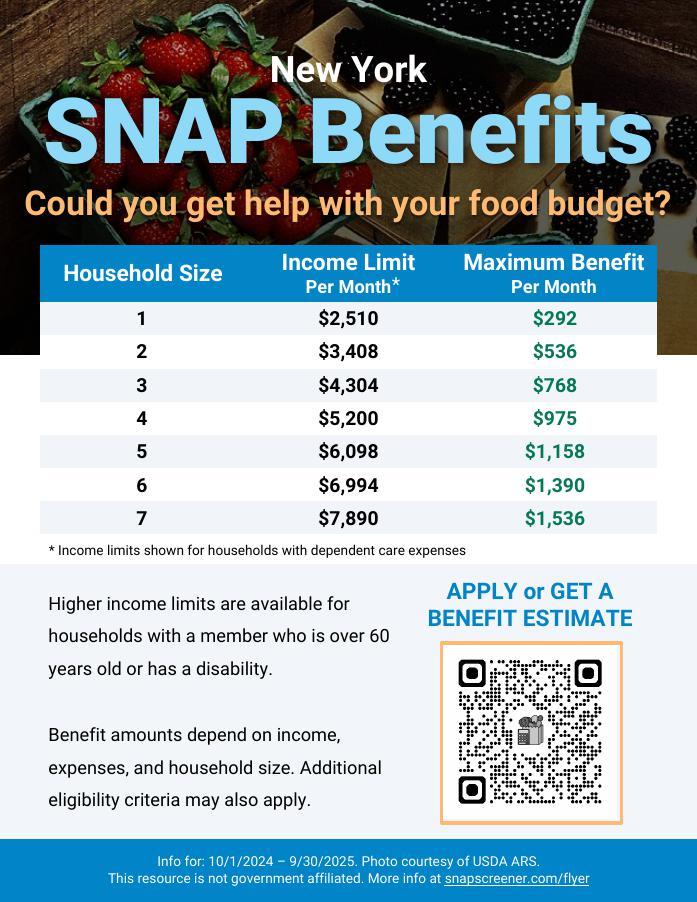Addressing Food Insecurity in New York City Amid Policy Shifts
Consequences of Federal SNAP Benefit Cuts on NYC’s Food Security
The reduction in Supplemental Nutrition Assistance Program (SNAP) benefits under the previous federal administration has led to a marked increase in food insecurity throughout New York City. Households already facing financial hardship are now forced to make difficult decisions between essential expenses such as housing and adequate nutrition. On average, families have seen their monthly SNAP benefits decrease by approximately $36, a seemingly small amount that significantly impacts meal planning over the course of a month.
- Economically disadvantaged families: Reported a 10% rise in food insufficiency.
- Older adults: Encounter diminished access to vital nutrients, worsening chronic health conditions.
- Children under 18: Face increased risks of developmental and health complications due to inadequate nutrition.
Community food banks have observed a surge in demand, straining their capacity and underscoring systemic weaknesses in the city’s food assistance framework. With food prices escalating, these SNAP reductions deepen disparities in nutritional access, prompting urgent calls for policy reassessment.
| Demographic | Average Monthly SNAP Reduction | Increase in Food Insecurity |
|---|---|---|
| Low-Income Families | $36 | +10% |
| Senior Citizens | $24 | +8% |
| Children Under 18 | $30 | +12% |
Implications of NYC Council’s Grocery Delivery Legislation on Small Retailers
The recently proposed grocery delivery regulations by the New York City Council, while aiming to enhance consumer access, have introduced significant challenges for small-scale grocers. These businesses, often operating with minimal profit margins, face increased operational burdens due to new compliance requirements. These include complex delivery protocols, additional fees for last-mile logistics, and licensing costs that disproportionately impact independent stores compared to larger chains or delivery services.
Furthermore, the bill overlooks existing infrastructural limitations faced by these retailers, such as:
- Restricted financial resources to invest in necessary technology upgrades.
- Shortage of trained personnel capable of managing delivery and order processing under new rules.
- Competitive imbalance favoring large corporations with advanced logistics capabilities.
| Challenge | Effect on Small Grocers |
|---|---|
| Compliance Costs | Higher operational expenses |
| Delivery Complexity | Slower fulfillment times |
| Technology Investment | Financial strain on small businesses |
Combined Impact of Policy Changes on Access to Nutritious Food for At-Risk Populations
The intersection of federal SNAP funding cuts and local grocery delivery regulations has created compounded obstacles for New Yorkers in need of affordable, healthy food options. The reduction in SNAP benefits diminishes the purchasing power of millions, undermining their ability to secure nutritious groceries amid rising living expenses. Simultaneously, the City Council’s delivery bill, though designed to promote fairness, may inadvertently restrict affordable delivery services in neighborhoods already facing food access challenges.
This dual impact disproportionately affects low-income residents, particularly in areas with limited transportation and food retail options. Key concerns include:
- Decreased SNAP benefits reducing grocery affordability.
- Higher delivery charges burdening economically vulnerable consumers.
- Constraints on small grocers limiting food variety and availability.
- Reduced competition leading to fewer choices and increased prices.
| Policy Element | Likely Outcome |
|---|---|
| SNAP Benefit Reductions | Lower purchasing capacity for millions |
| Delivery Fee Regulations | Increased costs passed to consumers |
| Vendor Restrictions | Fewer small grocery options |
| Market Competition | Less choice, higher prices |
Strategies to Enhance Food Assistance and Delivery Systems in NYC
To counteract the negative effects of SNAP funding cuts and the restrictive grocery delivery legislation, it is essential to invest in adaptable, community-focused food distribution networks. Strengthening collaborations among food banks, nonprofits, and government entities can build a more resilient system capable of addressing urgent needs efficiently. Initiatives such as mobile food pantries and temporary markets in underserved neighborhoods can improve food access and serve as buffers against policy-induced gaps.
Additionally, integrating technology into food delivery services is critical. Developing user-friendly platforms that connect recipients with a wider array of grocery providers and nutritional choices can enhance accessibility. Subsidizing last-mile delivery expenses, particularly in low-income areas, will help reduce financial barriers. Expanding digital literacy programs targeted at seniors and non-English speakers ensures equitable participation in evolving food access models.
- Increase funding for grassroots food programs to broaden reach and adapt to changing community needs.
- Adopt data-driven delivery solutions to optimize logistics and minimize delays.
- Advocate for policy reforms that eliminate bureaucratic obstacles hindering efficient grocery delivery to SNAP beneficiaries.
| Initiative | Expected Benefit | Focus Area |
|---|---|---|
| Mobile Food Pantries | Improved access in transit-limited neighborhoods | Bronx, Central Brooklyn |
| Delivery Subsidies | Reduced cost barriers for SNAP users | Citywide |
| Digital Literacy Training | Enhanced online access for seniors and non-English speakers | Upper Manhattan, Queens |
Looking Ahead: Navigating Food Security Challenges in NYC
The intersection of federal SNAP benefit reductions and the New York City Council’s grocery delivery legislation presents a complex challenge for residents already facing economic hardship. As policymakers work to balance these competing priorities, it is crucial to monitor how these changes affect food access and affordability. A coordinated approach that addresses both financial support and delivery infrastructure will be vital to safeguarding the nutritional well-being of New York’s most vulnerable communities.













